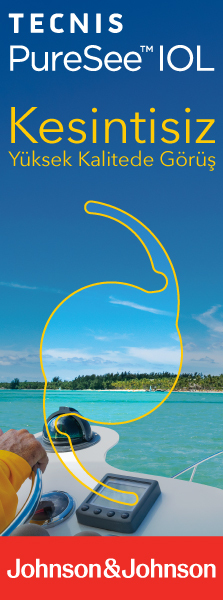2M.D. Asistant, Ulucanlar Eye Training and Research Hospital, Ankara/TURKEY
3M.D. Asistant, Ankara Ataturk Training and Research Hospital, Eye Clinic, Ankara/TURKEY
4M.D. Associate Professor, Davis Eye Clinic, Sacramento/USA
5M.D. Associate Professor, Ulucanlar Eye Training and Research Hospital, Ankara/TURKEY Purpose: To identify differences in corneal biomechanical properties between healthy and pigment dispertion syndrome patients.
Materials and Methods: Thirty eyes of 15 PDS (Group 1) and fifty eyes of 25 healthy (Group 2) subjects were included. Each participant underwent a complete ophthalmologic examination. Corneal biomechanical parameters; corneal-compensated IOP (IOPcc), Goldmann equivalent IOP (IOPg), corneal resistance factor (CRF), corneal hysteresis (CH) and central corneal thickness (CCT) were measured using an ocular response analyzer (ORA). The differences in ORA parameters between study and control group participants were analyzed using Student t test. A p value less than 0.05 was considered statistically significant.
Results: In PDS patients and healthy subjects mean IOPcc values were 16.4±3.0 mmHg and 17.2±3.6 mmHg respectively (p=0.135). IOPg values were 15.09±3.3 mmHg and 15.88±3.6 mmHg respectively (p=0.259), CRF values were 9.66±1.8 mmHg and 9.84±1.8 mmHg respectively (p=0.948), CH values were 9.66±1.5 mmHg and 9.60±1.7 mmHg respectively (p=0.592), CCT values were 552.6±52.6 μm and 537.3±38.5 μm respectively (p=0.054). No significant difference was found between two groups.
Conclusions: Pigment deposits of cornea endothelium do not affect corneal biomechanical properties in PDS patients.
Keywords : Pigment dispertion syndrome, ocular response analyzer (ora), corneal hysteresis




